40+ Best Viking Tattoo Sleeve Ideas & Symbolism (2024 Updated)
Vikings were raiders and warriors who marked the majority of the middle age. They raided from the North into England and France and, besides their warrior glory and strength, they also yielded rich culture, symbolism, and mythology. That’s why there are a lot of Viking symbols nowadays that are gladly tattooed, especially because Vikings were also inking their bodies throughout history.
Sleeve tattoos are some of the trendiest tattoo creations for a long time, and with such a rich symbolism in the history of Vikings, it doesn’t surprise us that many people opt to ink Viking symbols on their bodies, especially if those symbols are associated with Norse Gods and myths that described them.
However, the inspiration for the best Viking sleeve tattoo idea is not so easy to find, especially if you’re competing to make the most unique design you can find with your tattoo artist. Don’t worry, we wrote this article to help everyone who is hooked to get the Viking sleeve tattoo. We’ll look into the Viking symbolism and list the best tattoo designs for the Viking sleeve tattoo, below.
Vikings And Tattoos
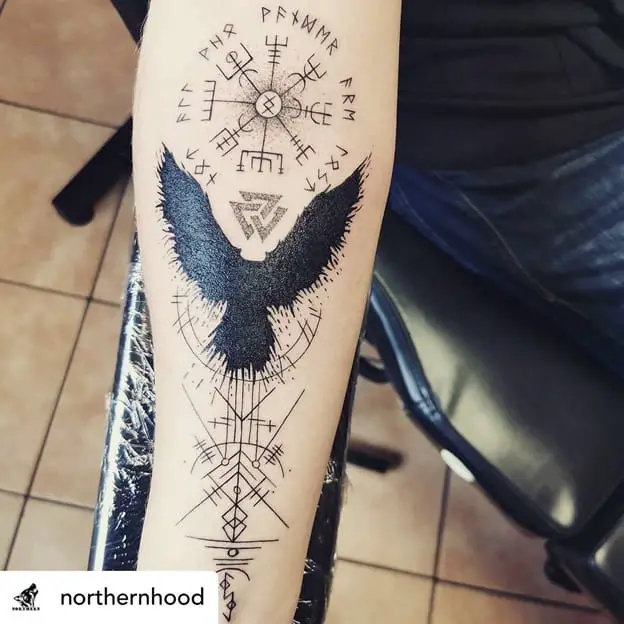
In the last decade, there have been a couple of TV shows and movies that glorified and told the tales of Vikings. Not surprisingly, all those Vikings and the Norsemen particularly practiced getting tattooed, especially as the story progressed. That hinted that the Norsemen associated inking their body to the part of their culture as they aged and made various life accomplishments that they wanted to mark on their body.
However, there’s hardly any evidence that promises that Vikings were tattooing themselves for real, and if they did, what was the ink made of? Understandably, the remains of the Vikings that were exhumed throughout history can’t hint of tattoos, as the skin will decompose over some time, giving absolutely no hint about the ink Vikings used.
However, two historical events could hint that the Vikings wore tattoos and paint over themselves, which likely inspired the pop culture to use tattoo on Viking warriors in their TV series and movies.
Throughout the history, it was believed that the Vikings wore their runes over their arms and legs, as well as faces. They’d tattoo themselves, as they’d engage in the explorative raids from the Scandinavia, to England, Iceland, and even further.
One of the key pieces of evidence that offer insight into the tattooing culture of the Vikings is the Arab traveler and scholar, Ahmad Ibn Fadlan. He was sent by the Caliphate to conduct a diplomatic venture in the Middle Volga area that now belongs to Russia.
As a traveling, he came across the Norse warriors that he believed were Vikings in the 10th Century. They sailed downwards the river Volga to make trades with the Arabs. Fadlan was the first and last person who wrote that the tattoos on Vikings were real. The tattoos that flattered the Vikings were much more detailed and widespread across the Vikings than the pop culture displays it today. He wrote they were tattooed from head to toe.
He also claimed that the tattoos that covered even the fingertips and their necks were colored green and blue, which gives a hint that the tattoo ink used was made out of the tree ash.
Unfortunately, Fadlan was the last person who reported on the sighting of Vikings as tattooed individuals. Also, we can’t confirm for sure that the Vikings were in great numbers. Perhaps, he has only seen a few individuals that were tattooed, and not all of them were. Additionally, that group of Vikings was believed to be called the Rus Vikings, how he also called them.
He also wrote that they behaved like savages. He noted that they were dirty, even though they washed their hands, face, and head. However, they did it in a “savage way.”
Although Fadlan is the only person who wrote about the sighting of inked Vikings, there’s another hint that could suggest that Vikings had tattoos.
One clue from Siberia can provide a potential hint about how Viking tattoos came into existence. Archeologists exhumed a body of a Scythian chieftain who was buried for thousands of years. It is believed that he was buried in 500 BC, and his body was covered in tattoos, which could hint that the Norsemen took over the tradition.
Some sources believe that the descendants of these civilizations taught the future Vikings how to ink their body and also practice it.
Viking Tattoo Symbols: What Nordic Symbols Should You Put On Your Viking Tattoo Sleeve?
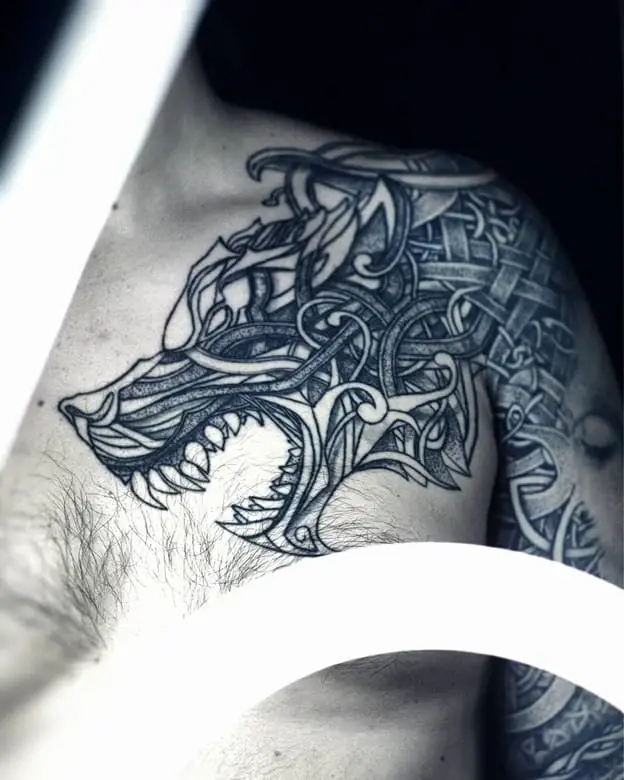
Whether the Vikings wore tattoos or not, there are a plethora of symbols in Norse mythology and all of them make great independent tattoos. Making a sleeve tattoo, however, often includes combines different symbols and designs to get the final product.
In this section, we’ll talk about the designs that you can combine to get the better results for your Viking tattoo slave.
On most occasions, tattoo artists receive different rune designs and symbols to tattoo on the Viking fans. However, some significant symbols made their name in Nordic history and it’s worth listing them down below.
Vegvisir: Vegsivir is certainly the most popular tattoo design that comes from the Vikings. It’s a symbolic Viking compass filled with Nordic runes that helped the Viking raiders find the right way. Vegsivir means “That which shows the way” in the Icelandic language.
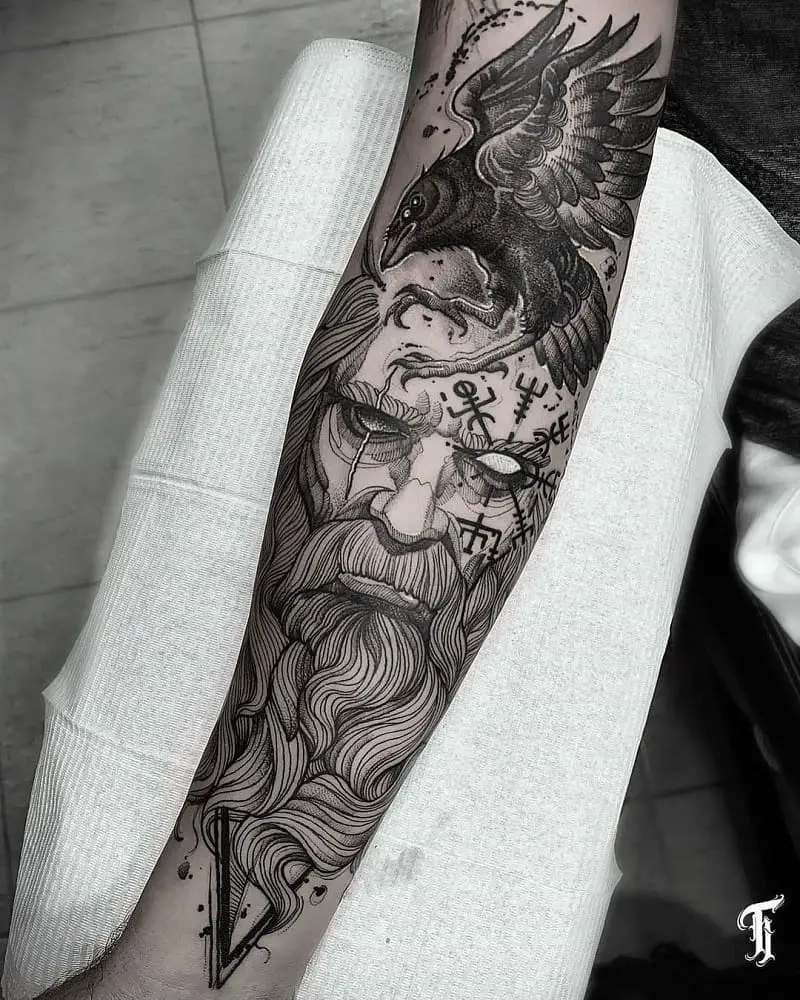
While not entirely of Viking origin, given that it was discovered in the 17th century, it hints at the Nordic culture that has likely brought the symbol to the Icelandic grounds when exploring it. More importantly, Vegvisir is a symbol of guarding and protection, especially among people who travel and sailors. It also gives protection to people who have gone through different struggles.
Some Nordic beliefs hint that the supreme god in the Norse mythology, Odin used this Nordic compass on his ventures as he’d always find the way and never get lost.
Yggdrasil: Yggdrasil represents the tree of life and is believed to be sacred in Norse mythology. Additionally, it’s a loved symbol asked for tattooing. It was initially mentioned in the 13th century and described as a tall ash tree that is located at the center of everything. It was believed that its branches could reach the skies and heavens. Norsemen believed in Yggdrasil to be the representation of life, stability, empathy, balance, and existence. If you’re looking for a tattoo that has deep and symbolic meanings, you should definitely choose Yggdrasil.
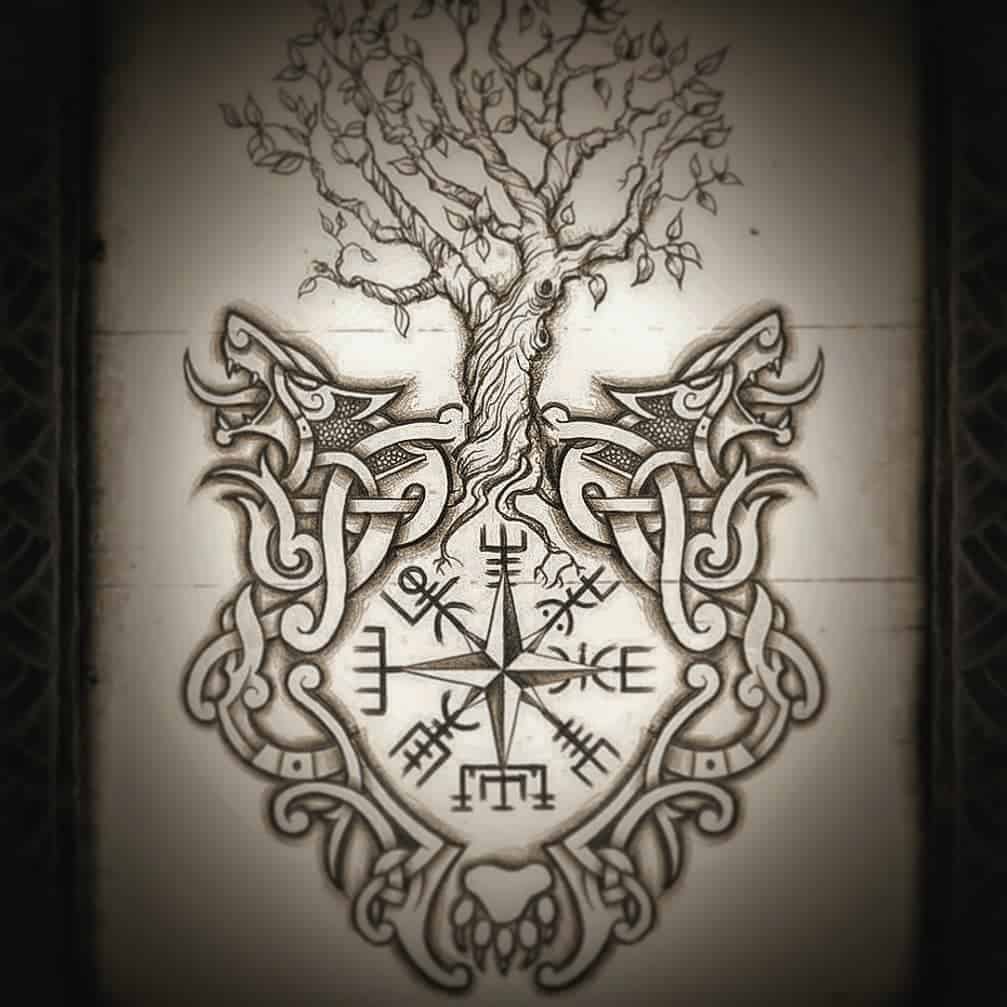
Valknut: If you’re looking for a tattoo sleeve with a simple and humble design, Valknut could be the right choice. This triple knot is used to commemorate slain warriors who have died honorably and are ready to join Odin and other Gods in Valhalla.
If you want your tattoo sleeve to be more discrete and not stand out too much, adding Valknut to your design could be meaningful. When it comes to the meanings, Valknut represents honor, courage, fearlessness, and acceptance.
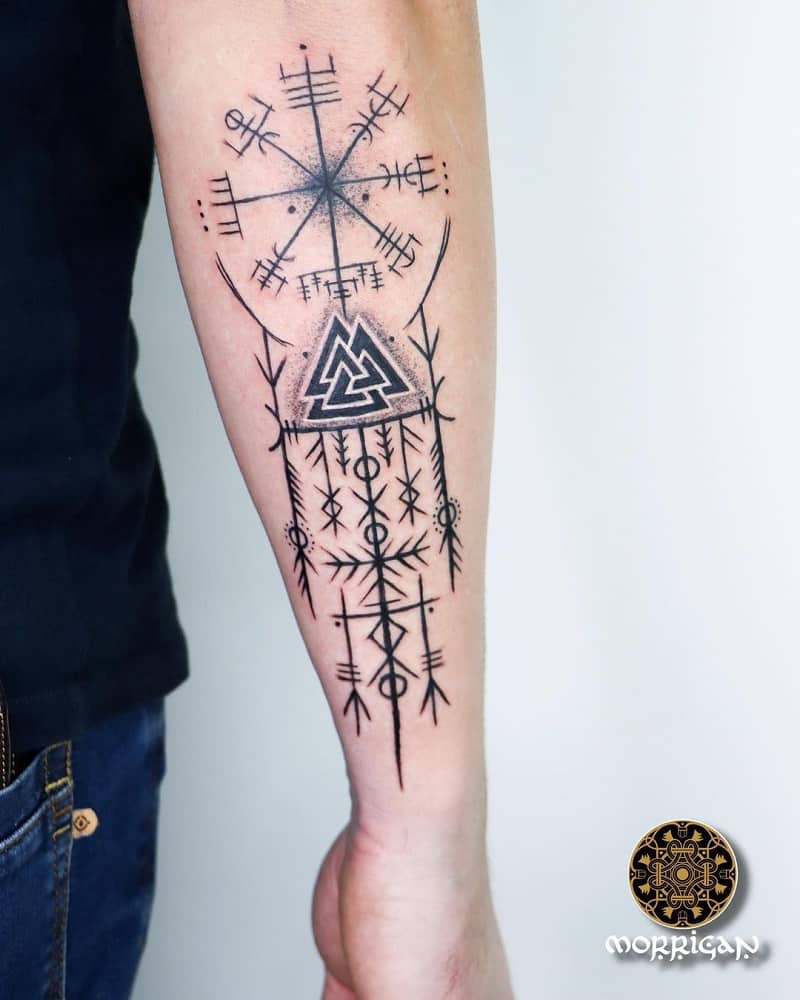
It’s no secret that armband tattoos are often used to honor someone who has died, the Valknut tattoo can be used in the same way, especially if you combine it with other symbols from Norse mythology.
Thor’s Hammer: Thor’s hammer is one of the most important weapons in Norse mythology. When yielded by the Son of Odin, Thor, the God of war and Thunder, he was unstoppable. It was believed that Thor’s hammer was responsible for a variety of natural disasters including restless sea, thunderstorms, earthquakes, and more.
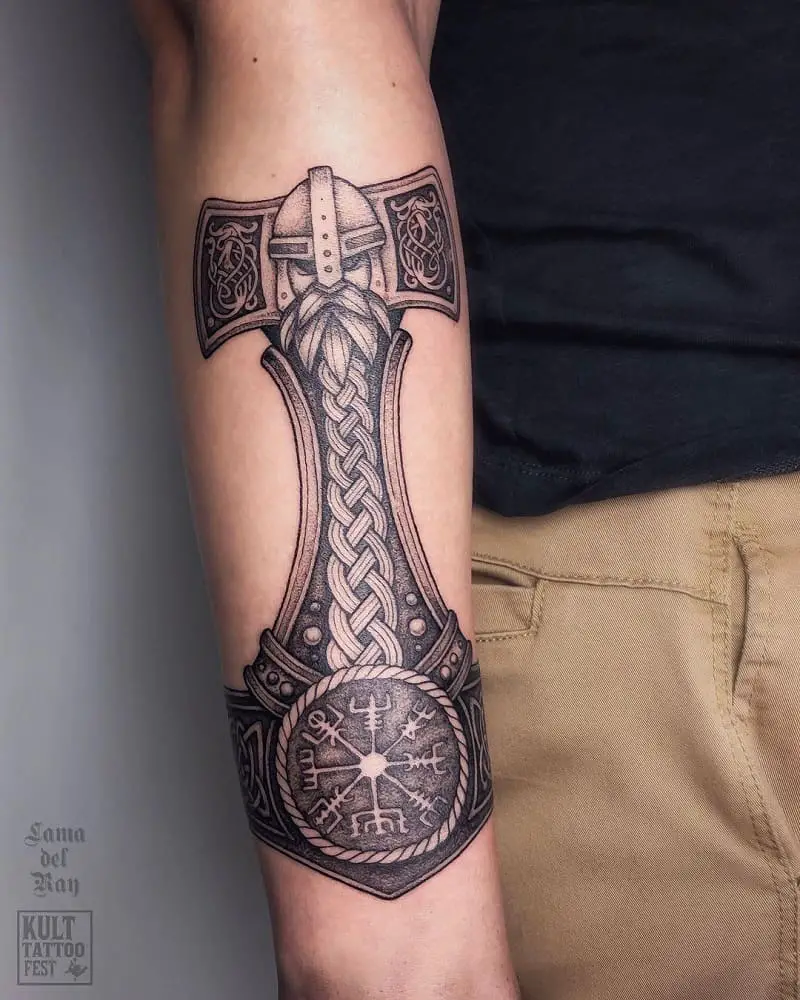
In sense of tattoos, Thor’s hammer can represent one’s willpower, strength, power, courage, and much more. It’s a great addition to the meaningful Nordic symbols.
Helm of Awe: When talking about the Helm of Awe, it’s important to make a difference between it and the aforementioned symbol Vegvisir. While the latter was the symbol of sailing, traveling, and exploration, this one is the symbol of courage and fearlessness.
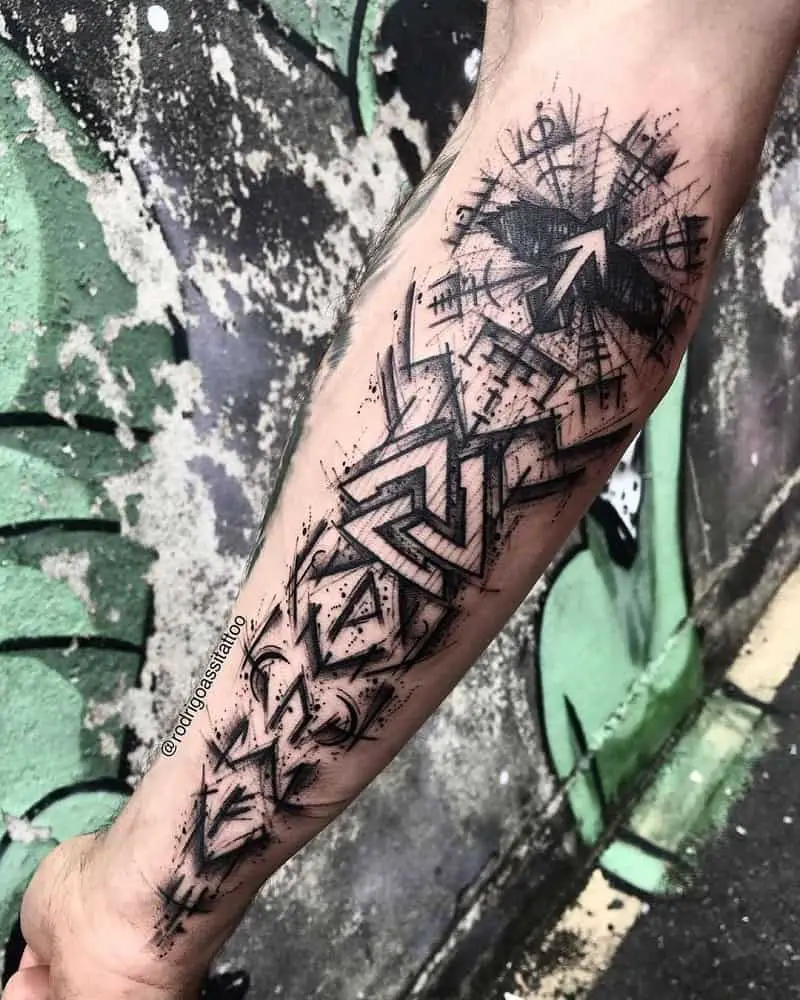
It was believed that the helm of awe was worn by the Viking warriors as protection and courage empowerment in battles and guidance. It was also believed that it can scare enemies. That said, if you need protection from the bad luck or the evil eye, this tattoo is a great choice. The only challenge that comes with it is fitting it into the sleeve tattoo, as it is a larger design compared to the others.
Also Read: 100+ Most Popular Tattoo Meanings Guide: Creatures (Not Just Animals) Are the Most Popular
Best Viking Tattoo Sleeve Ideas
Now after we listed the most popular Viking symbols used in tattoos, let’s take a look at all the different tattoo designs that used the Viking symbols for the sleeve tattoos. In combination with the aforementioned symbols, we’re sure that you’ll get inspiration for your next sleeve design.
Female Viking Sleeve
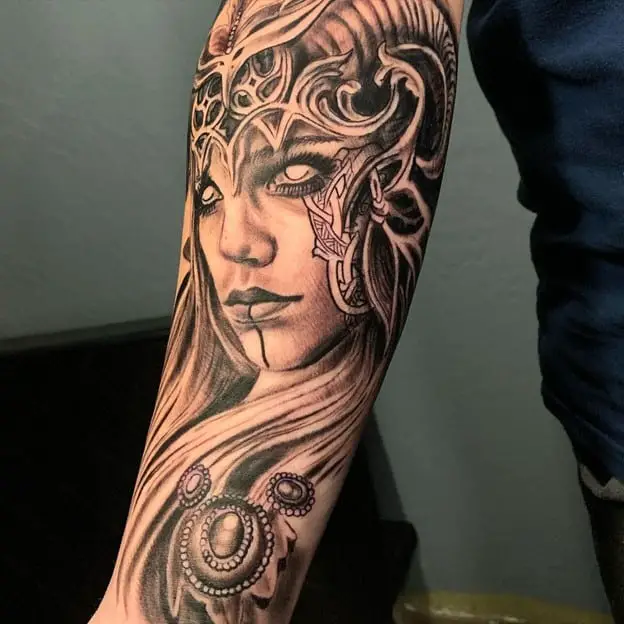
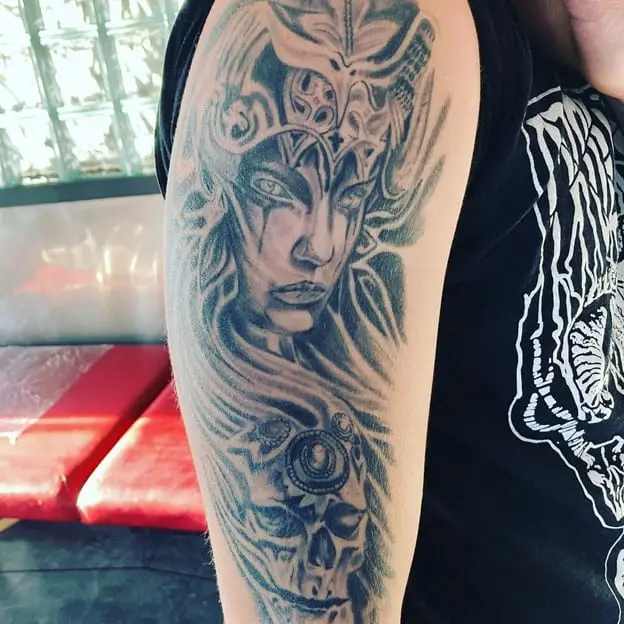
It’s no secret that Viking women were fierce warriors who stood side by side with their husbands and brothers on the battlefields. Viking women were treated much differently than the women in Christian countries, who often felt like less, and didn’t have the access to things that the Viking women did.
This particular tattoo looks stylish, attractive, and detailed. Undoubtedly, it took some time to make, but the quality of the ink looks unprecedented. Even the female Viking warrior can be seen having body paint and tattoo, giving a hint that the belief that Vikings had tattoos themselves is quite popular.
Also Read: 60 Sleeve Tattoos Design Ideas for Women (2023 Updated)
Viking Shieldmaiden Sleeve
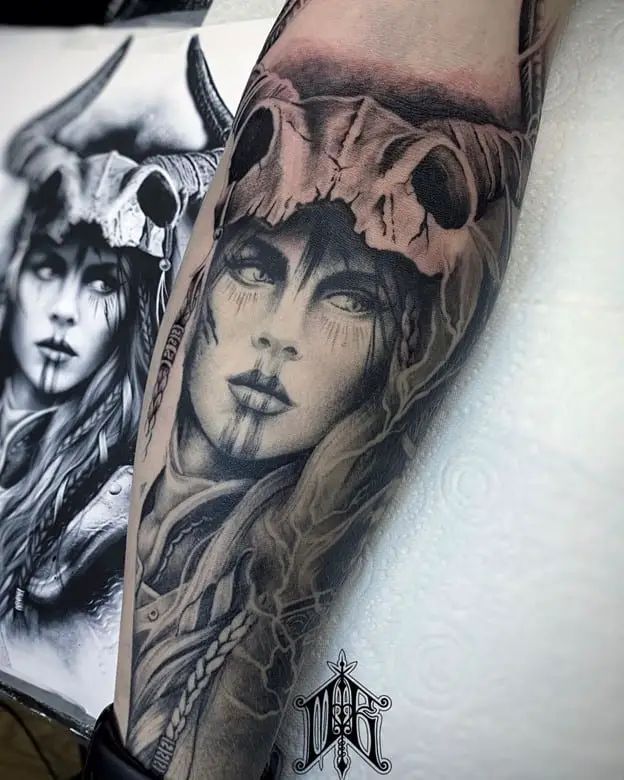
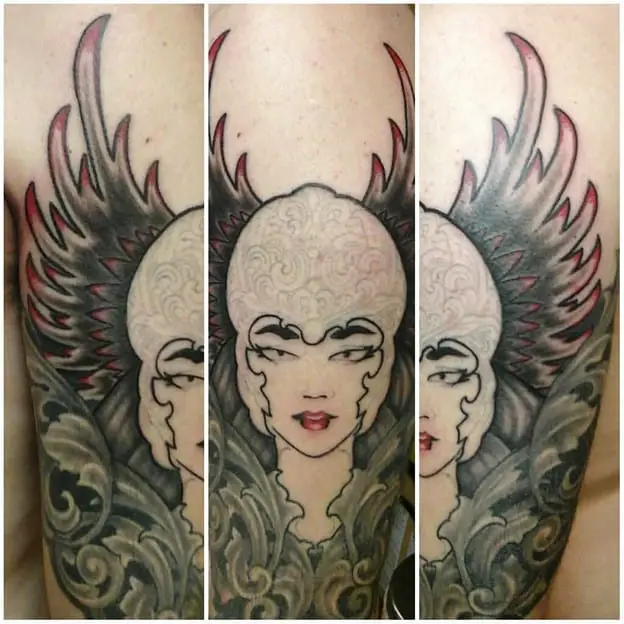
As mentioned earlier, Viking shieldmaiden were some of the best warriors in the North, who could fight side by side with men but also be on par with them. This shieldmaiden is inked to the smallest details, with hair braided into small braids, as was popular in the Nordic countries in the past.
She also wears a helmet made out of bones, which gives a hint that she is battle-ready. She also wears face paint, both on lips and under the eyes, that were made as detailed as possible. Women Viking warriors in tattoos can mean both fierceness, courage, and delicacy.
Fenrir Sleeve Tattoo
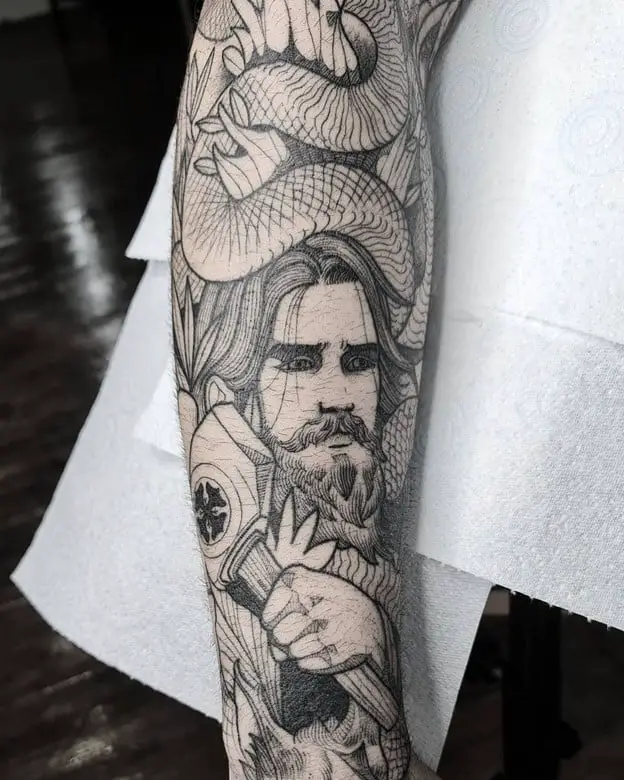
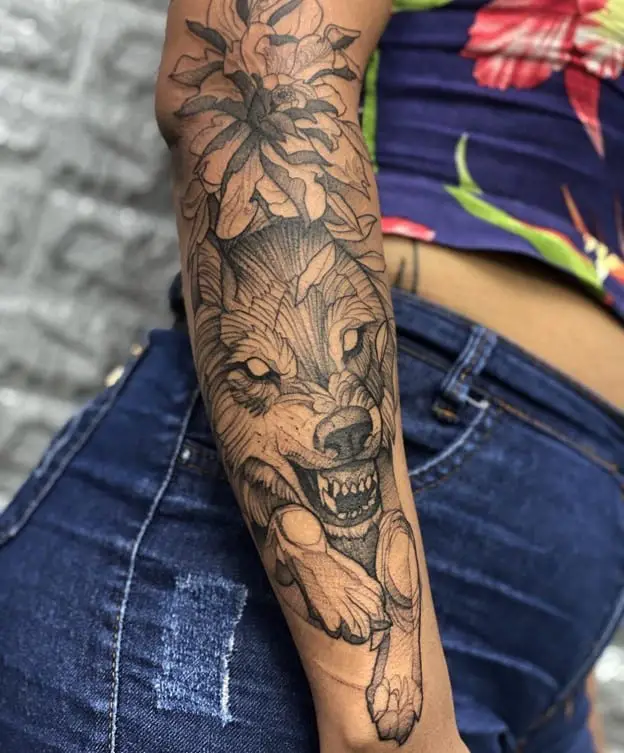
Fenrir is the mythological wolf in Norse Mythology who was destined to take revenge on the supreme God Odin. He’s also considered the son of Loki. Wolves usually don’t have the positive symbolism, especially because Fenrir is often associated with vengeance, wrath, and other negative traits. However, revenge was meant to be his destiny which also makes his actions just. There are various symbolisms for the colossal Nordic wolf. But, one of them is justice, which is what attracts many people to put him on the sleeve tattoo.
Black Ink Sleeve
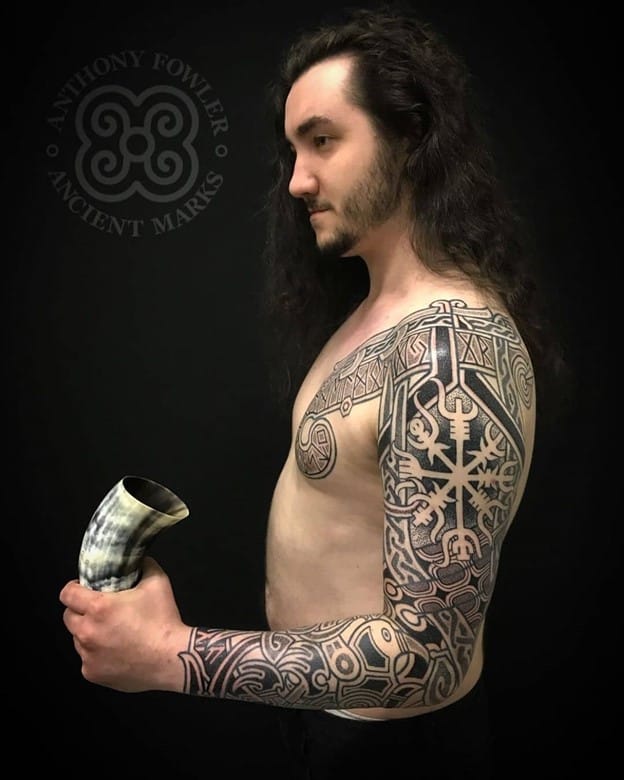
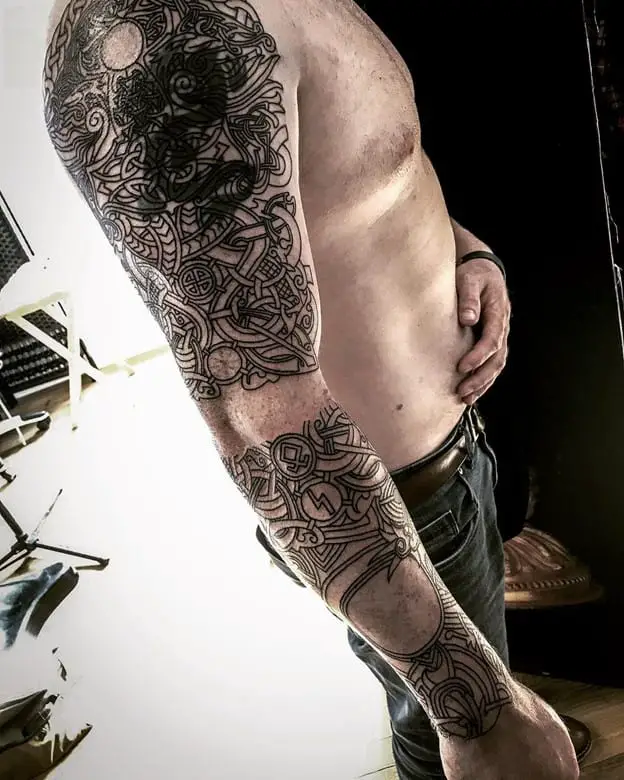
This interesting black ink sleeve that continues itself on the shoulder and chest includes various Nordic symbols. One of them is Vegsivir, the Viking compass carried by Odin on his ventures. We described it above, but this tattoo is much larger, fitting greatly together with other symbols in the tattoo. Many of these symbols are mainly knots, which are popular both in the Nordic and Celtic civilizations.
Odin Tattoo Sleeve
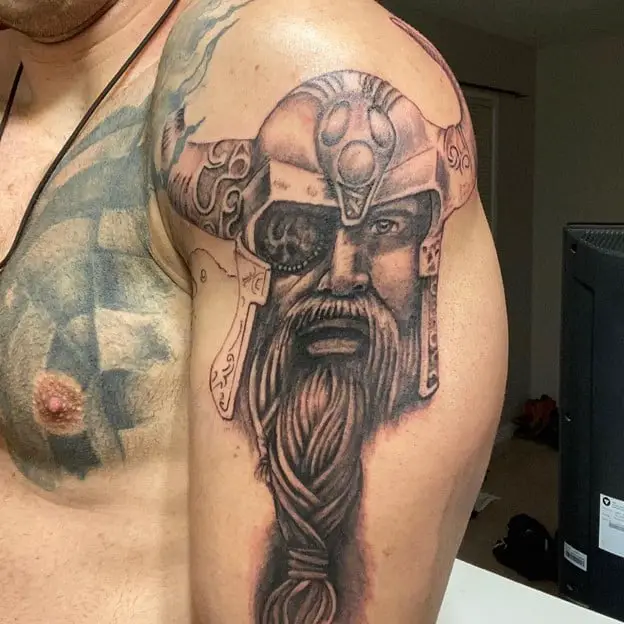
Odin is the supreme god in the Norse mythology, and we believe it’s exactly him in this tattoo design. It’s dark and mysterious, just as Odin does, but it also comes carrying great power. Odin is represented through war, wisdom, and even death, and is feared by the other Gods and enemies of the Norsemen. This tattoo is quite detail-oriented, especially given that Odin is a one-eyed God.
History Vikings Sleeve
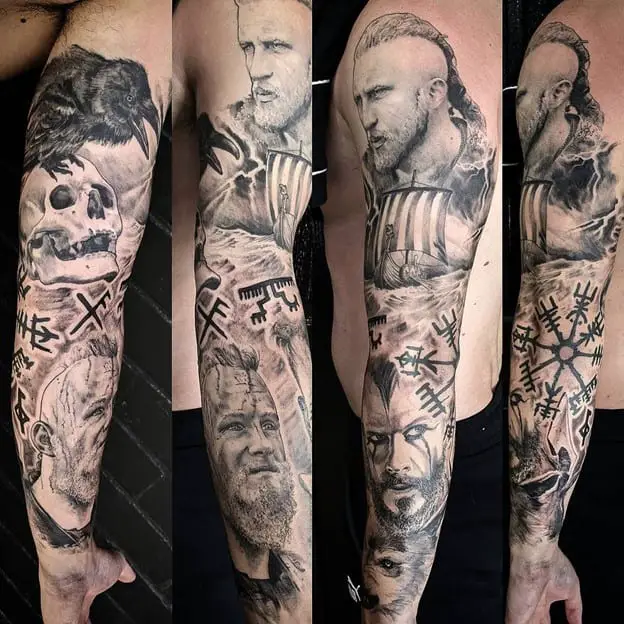
History Vikings is one of the most popular TV shows starring the vicious Norsemen. This tattoo sleeve shows some of the main characters including Ragnar Lothbrok, his best friend Floki the boat builder, and Ragnar’s Son Bjorn who passed on Ragnar’s legacy. The tattoo also includes more Nordic symbols such as raven which marks Odin, Vegvisir, and various Norse runes of different meanings. We like how detailed the characters are, and it looks great even after healing.
Storm Viking Sleeve
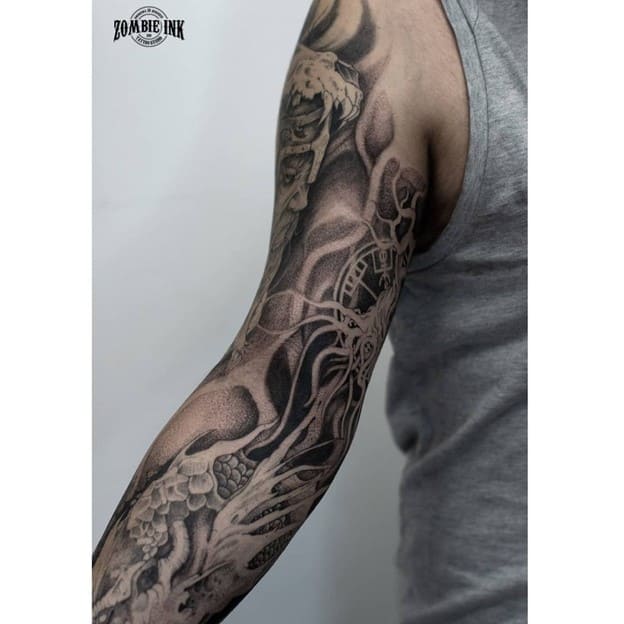
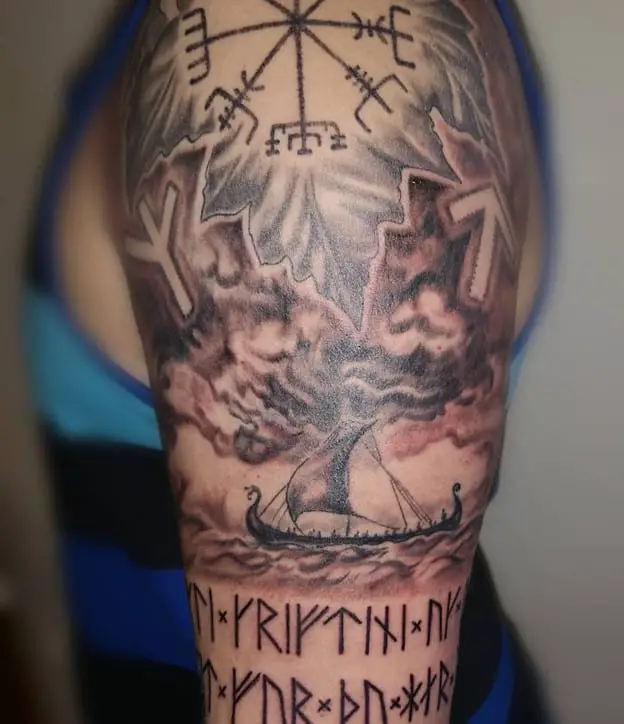
Storms in the Nordic culture and mythology is quite important because it represents the presence of the Gods, such as Odin, the supreme God, as well as Thor, who yielded his hammer that could shoot the lighting. For a lot of Vikings, storms could either sense trouble, hint that the Gods are angry, or indicate a bad omen. It also represented the challenge for sailors who struggled to get through the storms to reach their goals. This tattoo looks absolutely fab, and it also adds some runes, in addition to the Viking God and what seem to be dragon scales. The tattoo also features runes, which is quite cool.
Wolf And Viking Sleeve
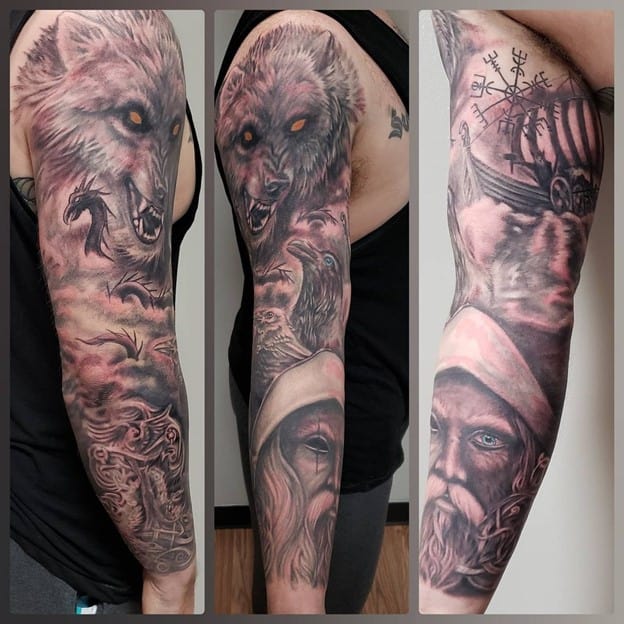
This is another Viking Sleeve tattoo that includes the Just and furious Fenrir in the picture. However, it also includes other entities such as Odin, hinting that Fenrir is drawn to conduct his vengeance on the supreme God. There are other symbols in the tattoo, including the lighting bolts, clouds, dragons, crows, and Vegvisir, which was often carried by Odin himself. We like how Fenrir was made to be above the other symbols in the tattoo, and his anger was perfectly drawn through various details. According to the author of the image, this tattoo is supposed to represent Ragnarok, or what’s considered the end of the world in Norse mythology.
Also Read: 30+ Wolf Tattoo Design Ideas (And The Meaning Behind Them)
Nordic Sleeve
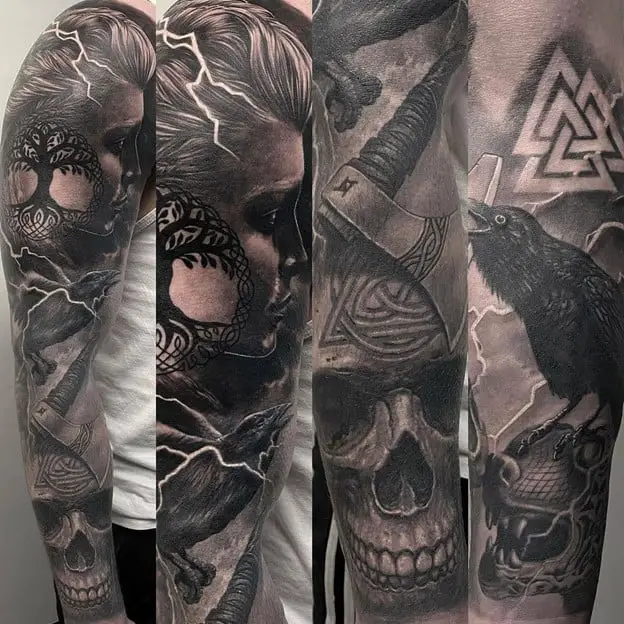
If you’re looking for a super-detailed Viking sleeve for your new tattoo, this one is among the best we found. That’s because all the combined symbols are associated with Vikings and the Norsemen.
They combine a female Viking Warrior, staring back while surrounded by the Nordic signature axes, the tree of life tattooed into her face, as well as the raging thunderstorm, the seer of the death, and the Valknut symbol of three overlapping triangles, which can mark the death or a fallen warrior that has deserved their entrance into Valhalla. It looks super-detailed and will serve as an inspiration to someone looking for a tattoo with mixed symbols.
Huginn and Muninn
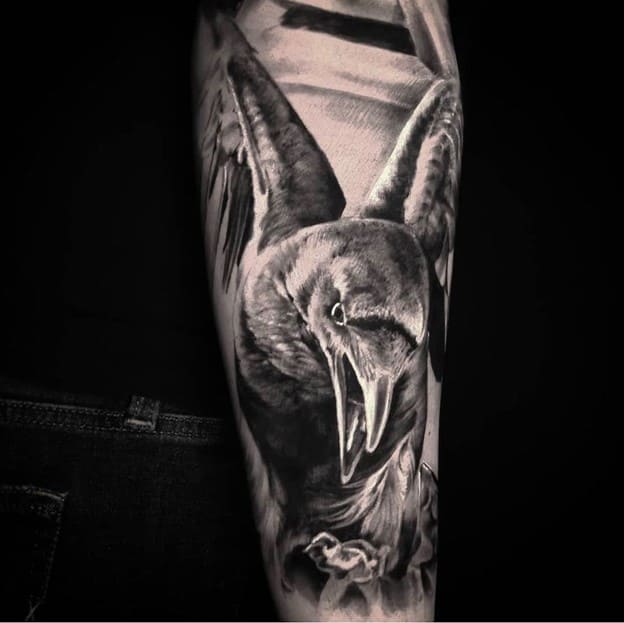
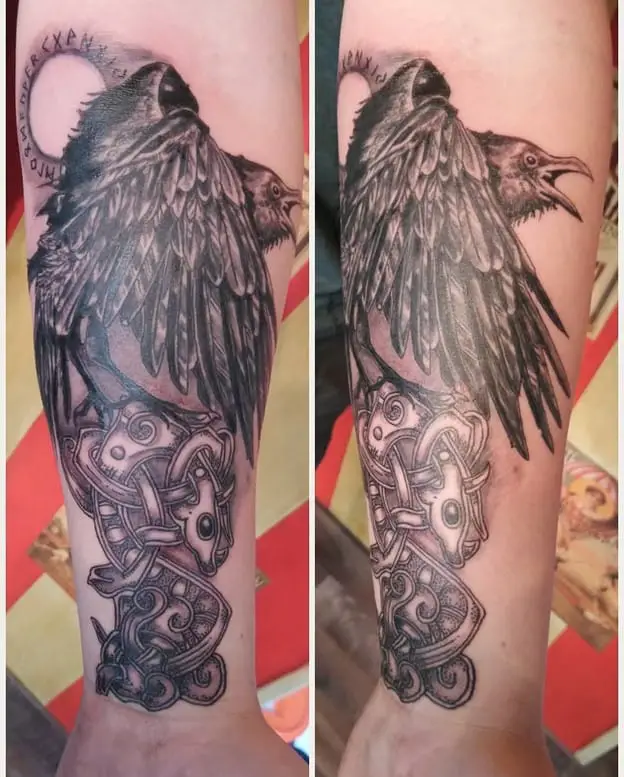
Huginn and Muninn are twin crows that belong to Odin and serve him. For him, they’d fly over the world to learn more about what’s going on in it and then report it back to the Supreme God. Although this tattoo doesn’t entirely cover the sleeve, it can be a great idea to use in your future sleeve tattoo. We also like how the artist drew the crows, with special details in the beak, eyes, and the wings that are being spread out to fly. It’s as if the crows are making the sound out of the tattoo. It’s a great tattoo that would look even better with the addition of other symbols.
Storm Sleeve
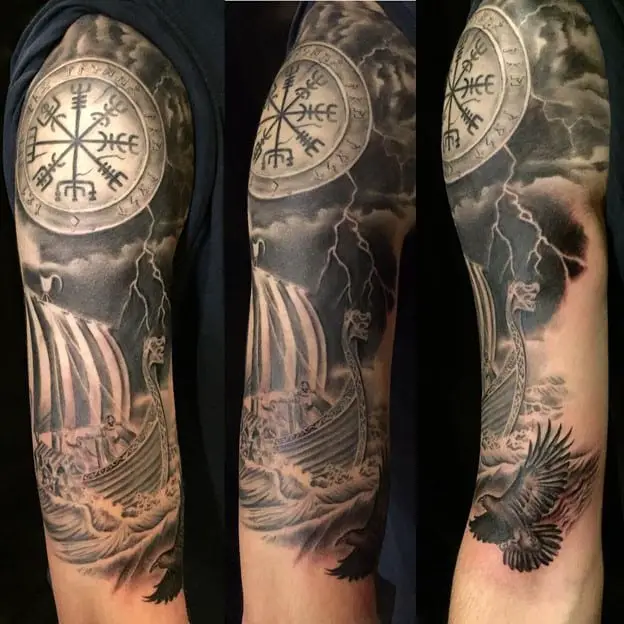
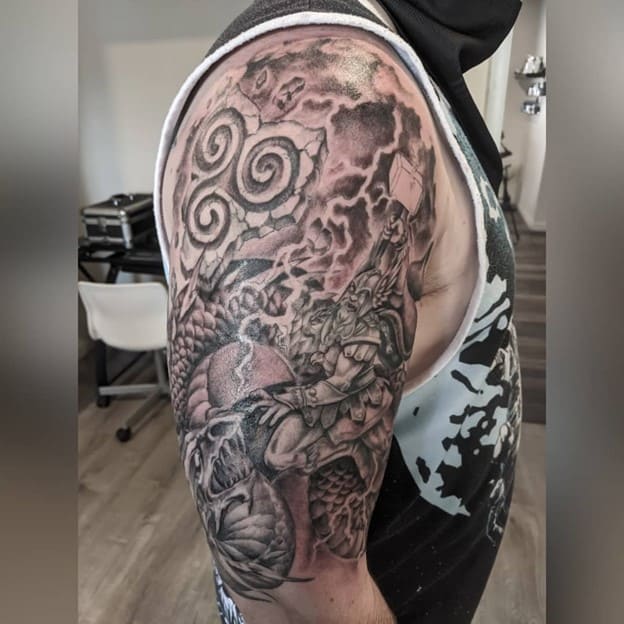
This tattoo looks into the adventurous spirit of Vikings, as well as their ventures when raiding the sea and looking for the fertile land. More often than not, Vikings would embar on Journeys with their boats and ship, and those journeys would be filled with raging storms that would make the sea rage. This tattoo is detailed because it shows both the sea and the raging skies. Also, it shows that the boat belongs to Norsemen. There’s also a Vegvisir on the shoulder, which is the perfect representation of the compass of life and that no matter what you go through, Odin is there to protect and guide you.
Viking Warrior Sleeve
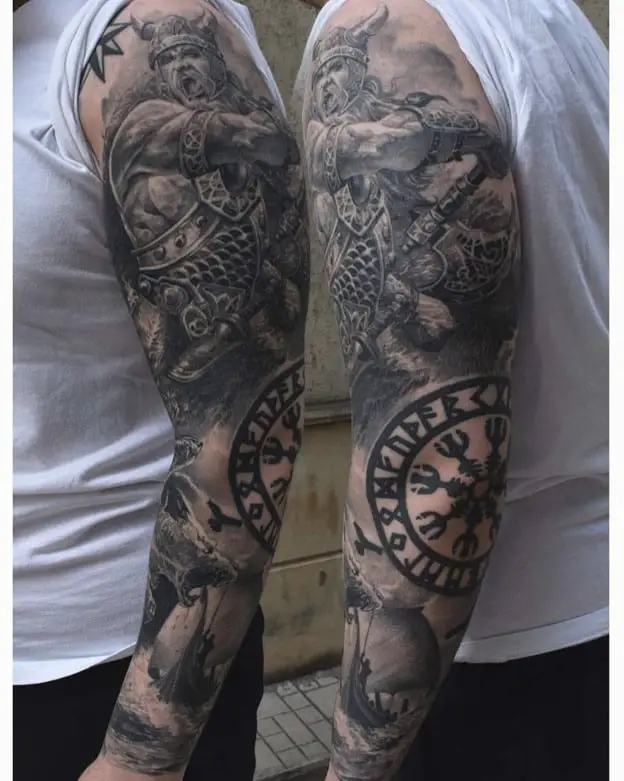
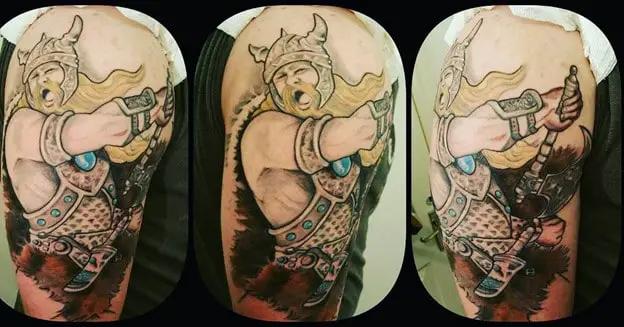
This is another Viking sleeve tattoo that is rich in details, and also fits a great number of elements connected to the Nordic tradition and culture. The Viking warrior with a horned helmet and armor is in a fight, but also surrounded with the symbols like Vegvisir, boat, thunderstorm, other dead warriors, and others. We also like the brushed design that hints at mystery and combines so many known Viking symbols.
Jormungandr Tattoo
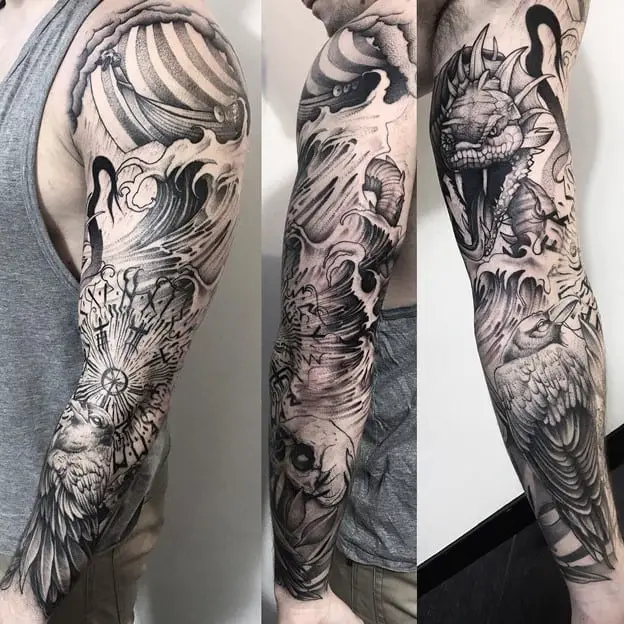
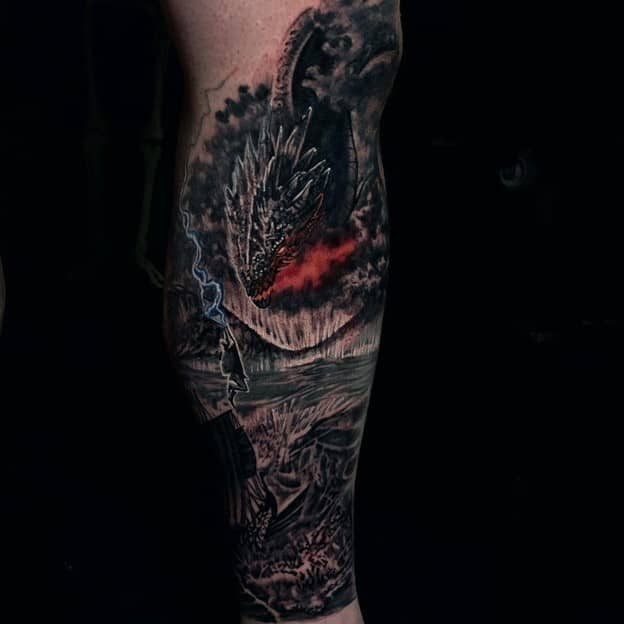
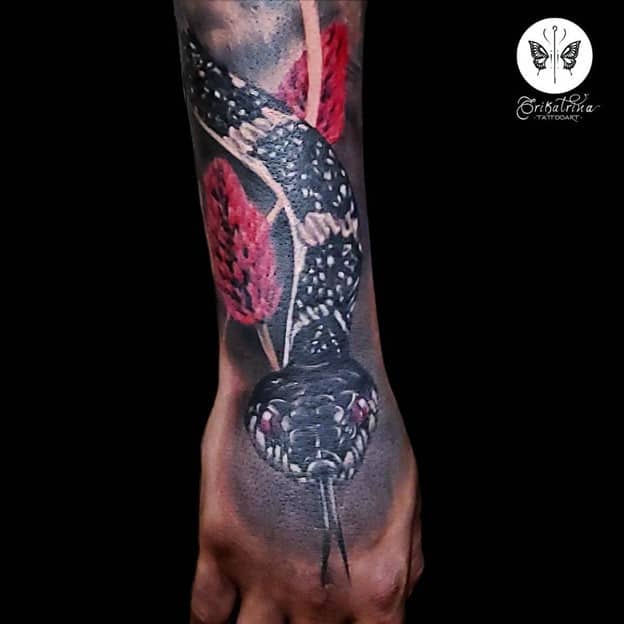
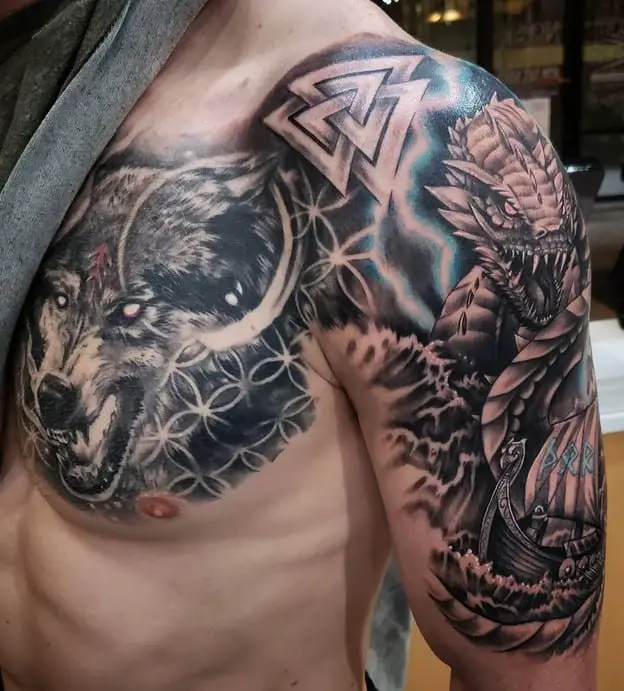
The last tattoo sleeve hints at a mythical creature that Thor fought with his hammer, the Midgard serpent known as Jormungandr. It also adds other symbols like the restless sea, Huginn and Muninn, and the famous Viking compass that we mentioned throughout the article. This is among the top three tattoos that we displayed in this article, as it’s dark yet bright, and also rich in accurate and sleek details.
This tattoo is of impeccable design and perfectly laid out on the entirety of the arm. It’s also worth mentioning that not many people ink the Midgard Serpent, even though there are a lot of Serpent tattoos out there.
Frequently Asked Questions About Viking Tattoo Sleeves
Here you can find answers to the most popular questions regarding the Viking Tattoo sleeve tattoo ideas. Make sure to check them out. Perhaps, you’ll find an answer to the question you’ve been asking yourself for a long time.
Q: What are the most popular Viking sleeve tattoos?
A: Most Viking sleeve tattoos combine different symbols such as the Nordic Gods, symbols like the Thor’s Hammer, crows, Vegivisir, Valknut, and others. More often than not, there could be inspirations for the popular characters from the TV show Vikings, as well as some other symbols like boats, as Vikings raided and traveled a lot.
Q: Did Vikings have tattoos?
A: The most accurate evidence of Vikings having tattoos are the records from an Arab scholar who traveled the Volga and encountered the so-called Rus Vikings who were said to be tattooed from head to toe. Most of the tattooed Vikings beliefs derive from the pop culture and TV shows that depict Viking warriors as tattooed.
Q: What is the meaning behind the Viking and Nordic Tattoos?
A: Most popular tattoo meanings that are connected to Vikings are the symbols of power, strength, courage, and the timeless respect and ode to the Nordic Gods that Vikings worshipped and believed in. They fought in their names and also died in their name in the process. That’s why a lot of Viking sleeve tattoos either depict Thor or Odin, who are the most popular Gods in Norse mythology.
Also Read:
- Safe, non-toxic plant-based temporary tattoos made with 100% high-definition printing for a realistic look without the pain
- Easy to apply and remove - just stick for 20 seconds then take off
- Set includes 5 sheets with 17 fun, delicate designs like hearts, cats, smiles, suns, moons, and more
- Waterproof and long-lasting - stays on up to 2 weeks of wear
- Fashionable for women, men, girls and boys
- Place on arm, wrist, neck, leg, finger, waist, foot and more
- Great for parties, birthdays, and showing your unique style

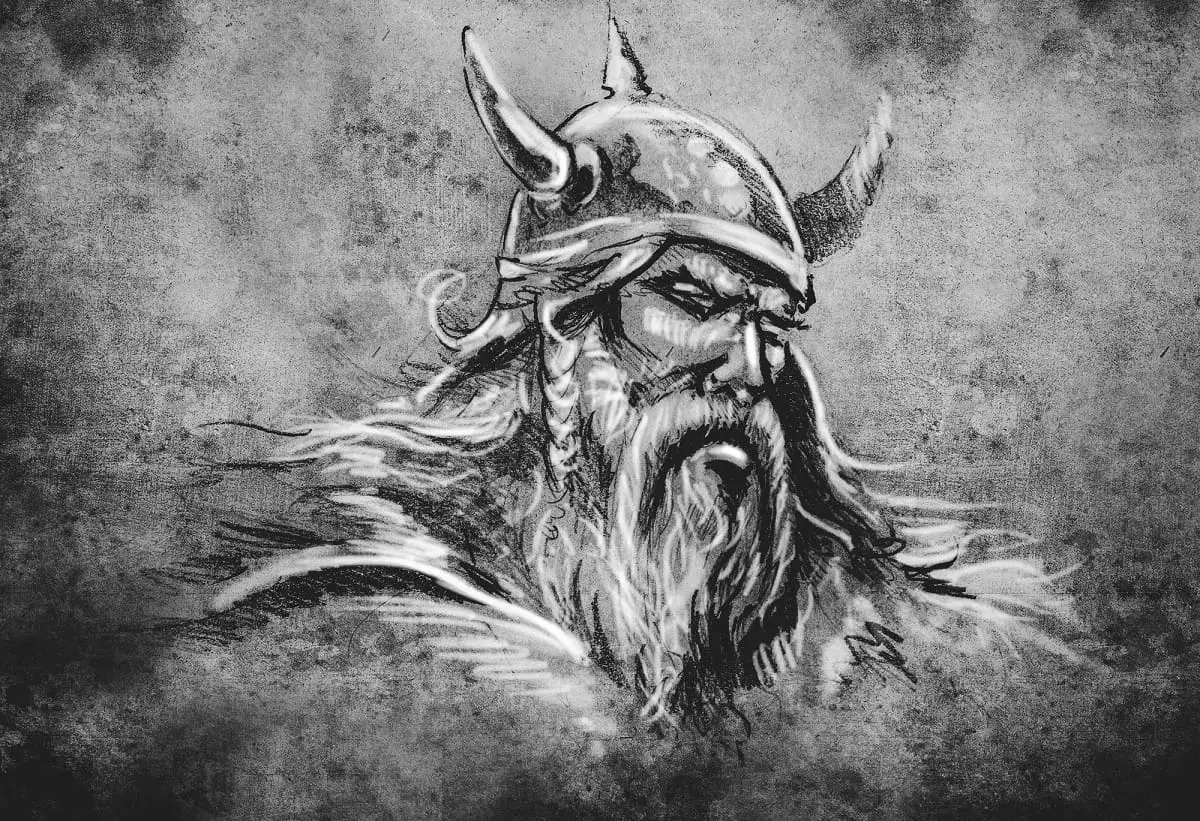

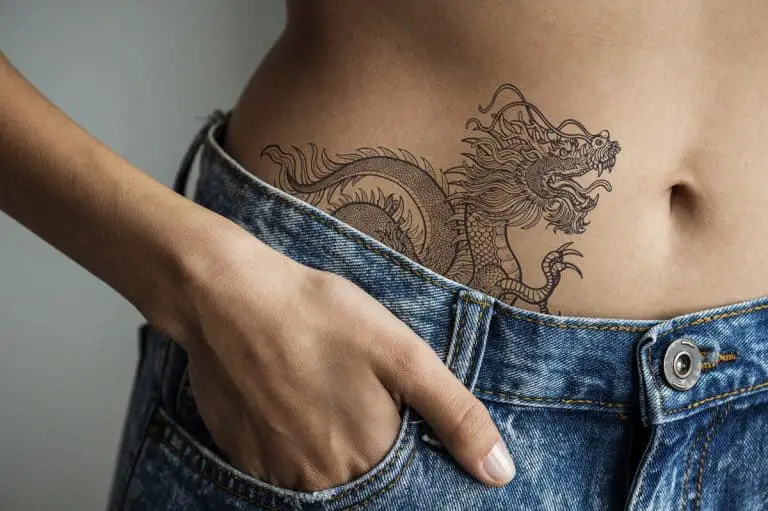
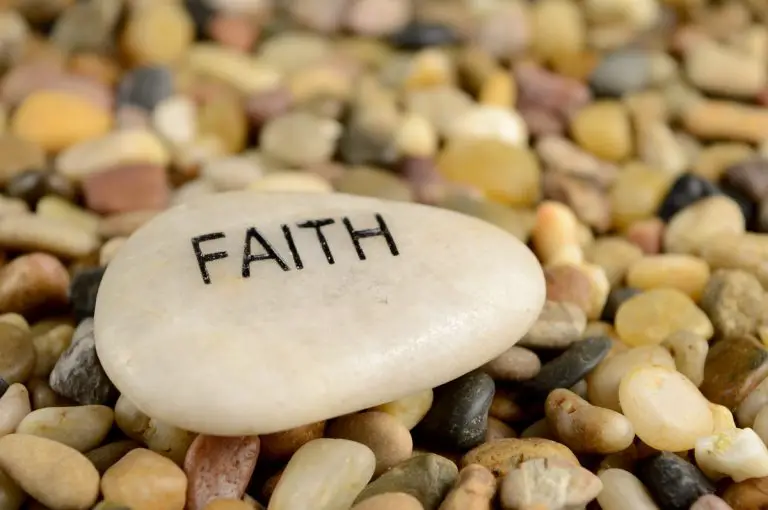

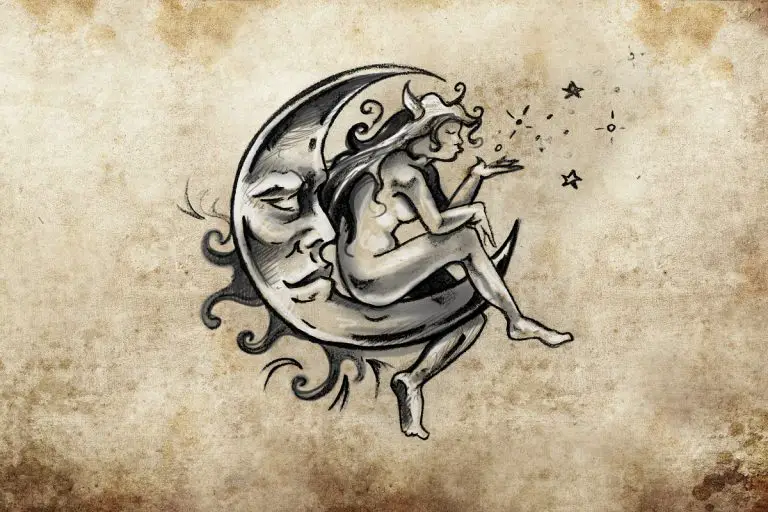
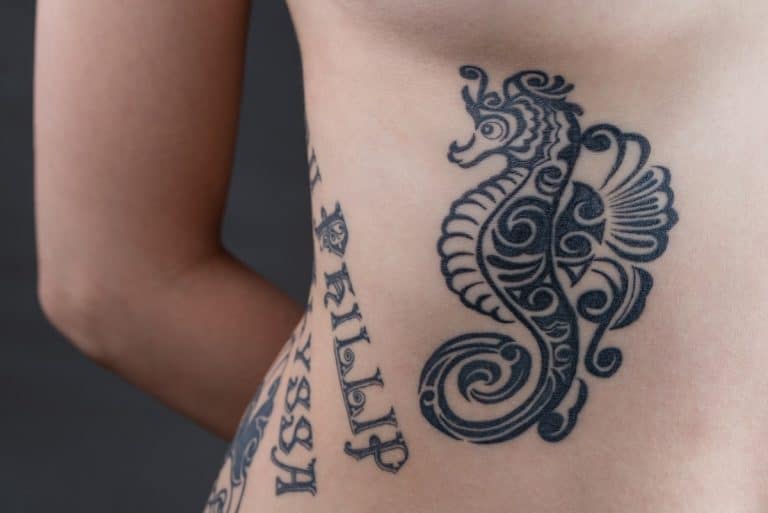
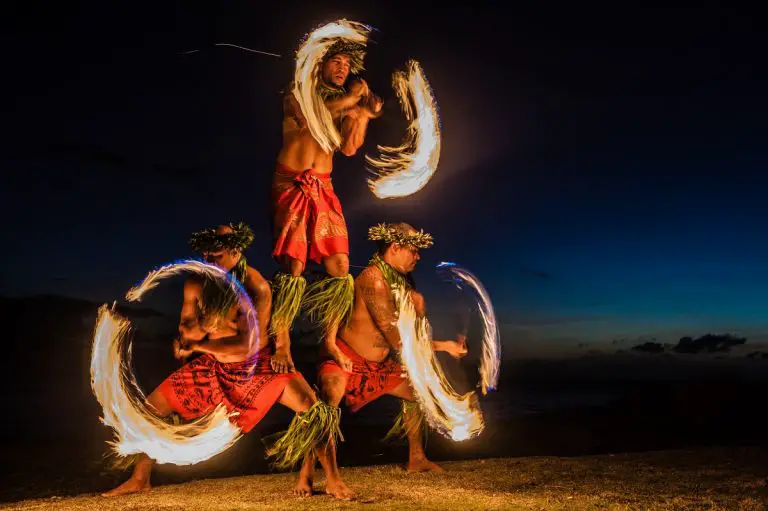
Just to let you know vegvisir is not a “compass” it’s 8 nordic staffs that make the make the protection symbol for warriors, when they go on adventures over seas, if they were to be struck from the boat itself a run to “all way fin their find their way home in harsh seas”
It is not even certain that Vegwisir was a symbol from the Norse period. In the Huld manuscript there is only one sentence that describes the Vegwisir. Incidentally, the manuscript dates from the nineteenth century. So it is not at all certain whether the Vikings knew it.
This is great, Thanks for sharing! These tattoo ideas are amazing. These tattoo designs are so cool and stunning. Just like my shieldmaiden tattoo. Check out: https://wannabeink.com/collections/viking/products/viking-shield-maiden-with-sword-best-temporary-tattoos